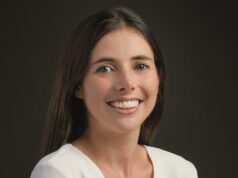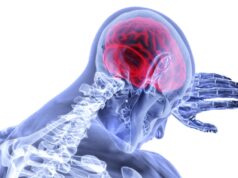A study published in Neurorehabilitation and Neural Repair finds that the capacity of the human brain to recover and rewire itself peaks around two weeks after an ischaemic stroke, and diminishes over time.
These findings are the result of a study conducted in London, UK, and Adelaide, Australia. These cohorts followed the recovery of 60 stroke patients up to one year after their stroke recovery.
Brenton Hordacre (University of Southern Australia, Adelaide, Australia), lead author of this paper commented, “Earlier animal studies suggested this was the case, but this is the first time we have conclusively demonstrated this phenomenon exists in humans.”
According to researchers, they scanned the brains of stroke survivors as they recovered over a 12 month period. They report that they found in the initial days following an ischaemic stroke, the brain has a greater capacity to modify its neural connections and its plasticity is increased.
Hordacre further stated, “It is during this early period after stroke that any physiotherapy is going to be most effective because the brain is more responsive to treatment.
“Earlier experiments with rats showed that within five days of an ischaemic stroke they were able to repair damaged limbs and neural connections more easily than if therapy was delayed until 30 days post stroke.”
The researchers used continuous transcranial magnetic stimulation (cTBS) repetitively, to activate different hemispheres of the motor cortex. According to researchers, “This initiates early stages of synaptic plasticity that temporarily reduces cortical excitability and motor-evoked potential amplitude. Thus, the greater the effect of cTBS on the motor-evoked potential, the greater the inferred level of synaptic plasticity.”
Separate measurements were taken from each cohort. The Adelaide laboratory tested the stroke damaged motor cortex, while the London laboratory tested the non-stroke damaged hemisphere. Hordacre said, “Our assessments showed that plasticity was strongest around two weeks after stroke in the non-damaged motor cortex. Contrary to what we expected, there was no change in the damaged hemisphere in response to cTBS.”
According to Hordacre, the findings confirm the importance of initiating therapy as soon as possible after a stroke.
“The next step is to identify techniques which prolong or even re-open a period of increased brain plasticity, so we can maximise recovery,” Hordacre says.














Stroke recovery will naturally follow from working with the one organ damaged by the stroke and from which all true recovery comes: the brain. In order to recover, stroke survivors have to rewire their brains. The technical term is neuroplasticity. It is the way the circuits in the brain can change and take the new shapes. We take advantage of this amazing ability of our brain to change in order to promote greater recovery of function after a stroke. Recovery is hard work that takes lots of repetition to change the brain Also the use of Herbal medication can be of great help for recovery and dealing with paralysis. For more information about after stroke recovery treatment you can reach out to my traditional herbal doctor on Facebook or google ” Dr Kpomosa home of relief” he has all the answers on stroke recovery process.